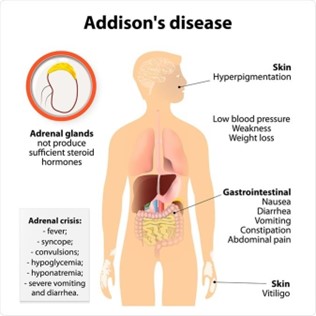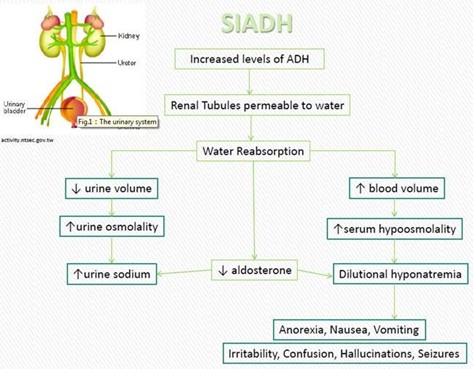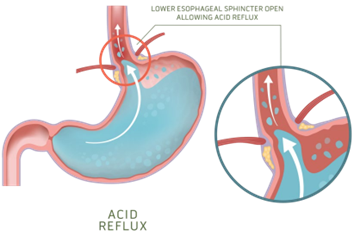A patient is admitted to the hospital in Addisonian Crisis a month after a diagnosis of Addison’s disease. The nurse identifies the nursing diagnosis of ineffective therapeutic regimen management related to lack of knowledge of management of the condition when the patient says:
“I double my dose of hydrocortisone on the days that I go for a run.”
“I had the stomach flu earlier this week and couldn't take the hydrocortisone.”
“I frequently eat at restaurants, and so my food has a lot of added salt."
“I do yoga exercises almost every day to help me reduce stress and relax.”
The Correct Answer is B
The statement "I had the stomach flu earlier this week and couldn't take the hydrocortisone" indicates that the patient may not be adhering to their prescribed medication regimen, which can lead to an Addisonian crisis. Therefore, the nursing diagnosis of ineffective therapeutic regimen management related to lack of knowledge of management of the condition is appropriate.
Addison’s disease is a condition in which the adrenal glands do not produce enough cortisol and aldosterone. Hydrocortisone is a glucocorticoid medication that is often used to replace the cortisol that the adrenal glands are not producing. In the Addisonian crisis, the body is unable to produce the necessary levels of cortisol and aldosterone, which can lead to potentially life-threatening complications such as hypotension, dehydration, and electrolyte imbalances.
The other statements may indicate areas where patient education is needed, but they do not directly relate to the immediate risk of an Addisonian crisis.

Nursing Test Bank
Naxlex Comprehensive Predictor Exams
Related Questions
Correct Answer is C
Explanation
The correct answer is c. I will eat foods high in potassium because the diuretics cause potassium loss.
Rationale for Choice A:
- Statement:"I should weigh myself daily and report any sudden weight loss or gain."
- Rationale:This statement is correct.It's crucial for patients with SIADH to monitor their weight daily as even slight fluctuations can signal fluid imbalances.Sudden weight gain can indicate fluid retention,while sudden weight loss might suggest dehydration.Both scenarios warrant medical attention.
Rationale for Choice B:
- Statement:"I need to limit my fluid intake to no more than 1 quart of liquids a day."
- Rationale:This statement is also correct.Fluid restriction is a cornerstone of SIADH management.By limiting fluid intake,patients can help prevent the buildup of excess fluid in the body,which can lead to complications such as hyponatremia (low sodium levels in the blood) and edema.
Rationale for Choice C:
- Statement:"I will eat foods high in potassium because the diuretics cause potassium loss."
- Rationale:This statement is incorrect.While some diuretics used in the treatment of SIADH can indeed cause potassium loss,this is not a universal side effect.Furthermore,increasing potassium intake without medical supervision can be dangerous,potentially leading to hyperkalemia (high potassium levels in the blood).It's essential for patients to consult with their healthcare providers for individualized guidance on potassium intake.
Rationale for Choice D:
- Statement:"I need to shop for foods that are low in sodium and avoid adding salt to foods."
- Rationale:This statement is correct.A low-sodium diet is often recommended for patients with SIADH to help manage fluid balance and prevent hyponatremia.Restricting sodium intake can reduce fluid retention and help maintain appropriate sodium levels in the blood.

Correct Answer is A
Explanation
GERD can increase the risk of aspiration (inhalation of stomach contents into the lungs), which can cause respiratory issues, including abnormal breath sounds. In these cases, monitoring of breath sounds may be more appropriate than monitoring of bowel sounds.
Bowel sounds are not typically monitored for GERD patients as GERD is a condition that affects the esophagus and the stomach, not the intestines. GERD is caused by the reflux of stomach contents into the esophagus, which can cause symptoms such as heartburn and regurgitation.
Abdominal girth is not routinely monitored for GERD patients as it is not typically related to the condition. GERD is a disorder that affects the esophagus and stomach and does not typically cause significant changes in abdominal size or girth. In rare cases, GERD can be complicated by a condition known as a para oesophageal hernia, which can cause a visible bulge in the abdomen. In these cases, monitoring of abdominal size and shape may be necessary.
The apical pulse is not routinely monitored for GERD patients as it is not directly related to the condition. GERD is a disorder that affects the digestive system, specifically the esophagus and stomach and does not typically have an impact on heart rate or rhythm.

Whether you are a student looking to ace your exams or a practicing nurse seeking to enhance your expertise , our nursing education contents will empower you with the confidence and competence to make a difference in the lives of patients and become a respected leader in the healthcare field.
Visit Naxlex, invest in your future and unlock endless possibilities with our unparalleled nursing education contents today
Report Wrong Answer on the Current Question
Do you disagree with the answer? If yes, what is your expected answer? Explain.
Kindly be descriptive with the issue you are facing.
